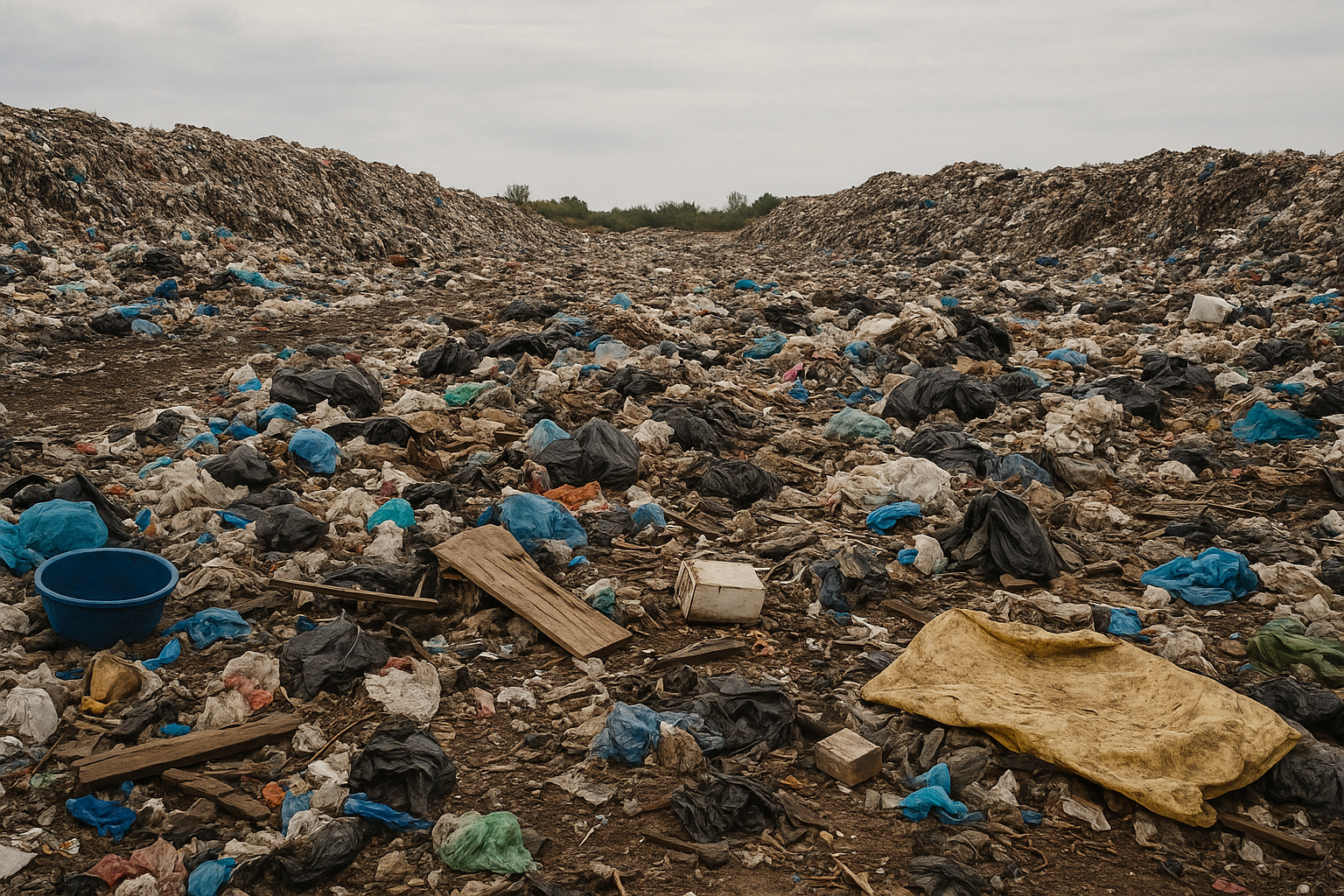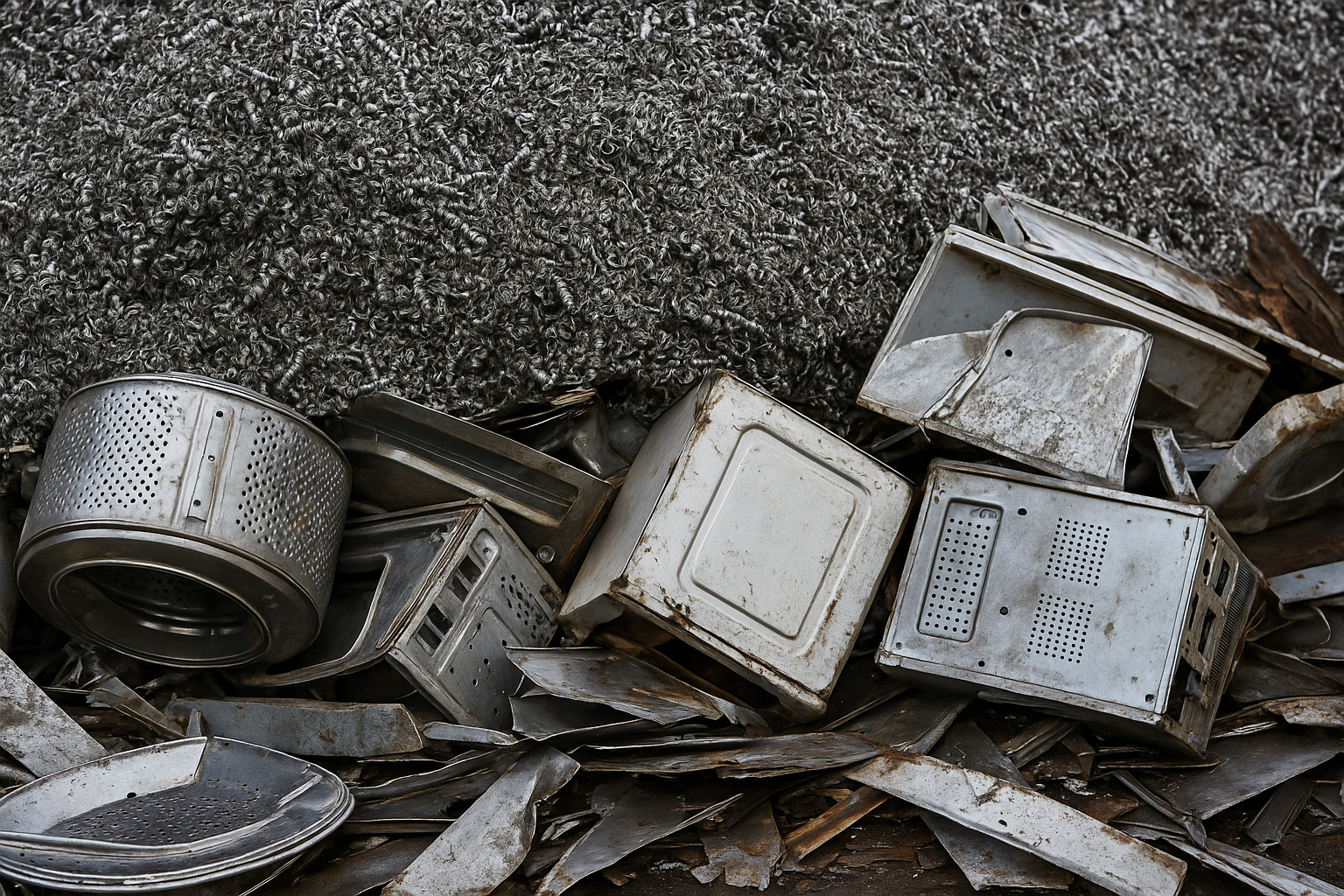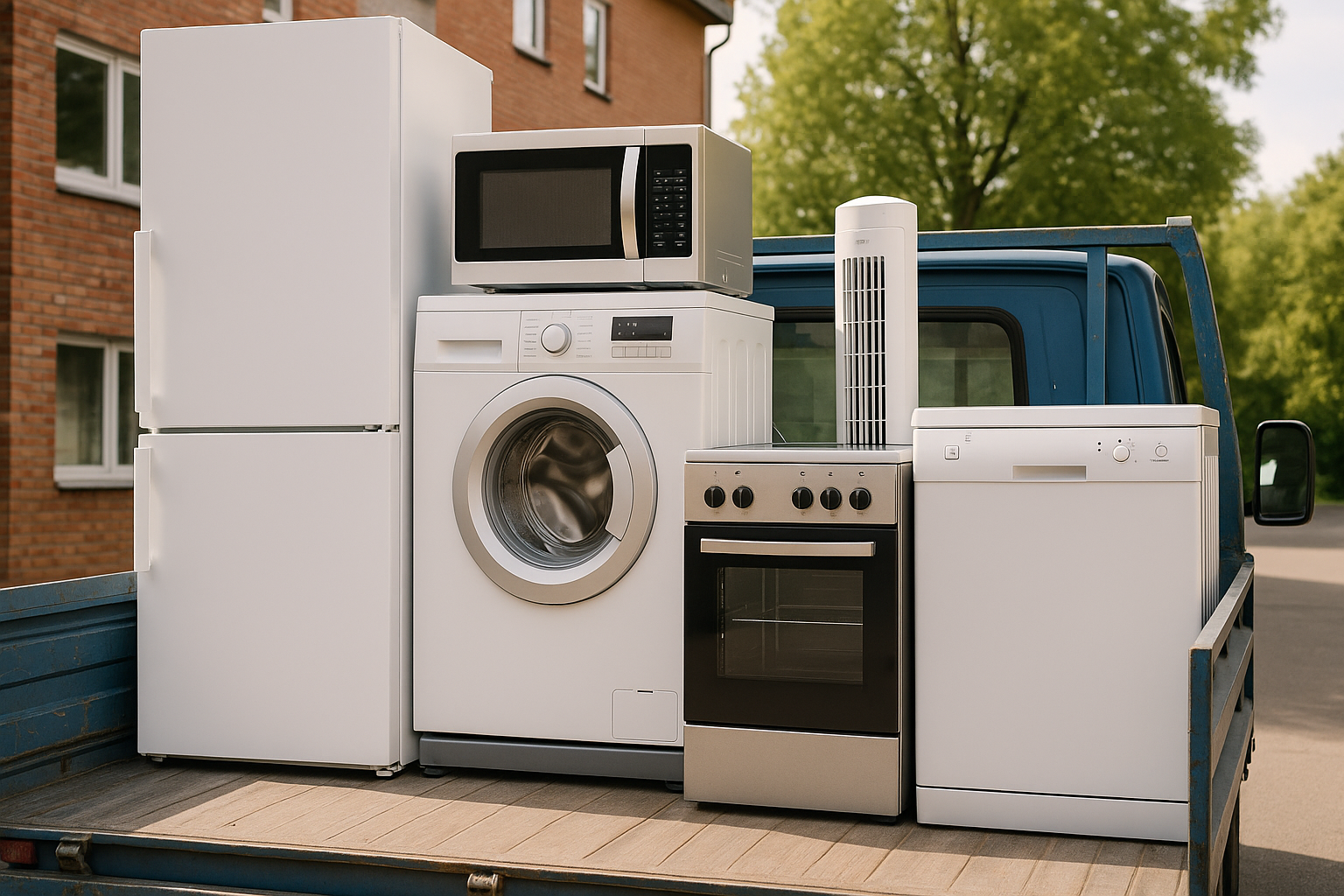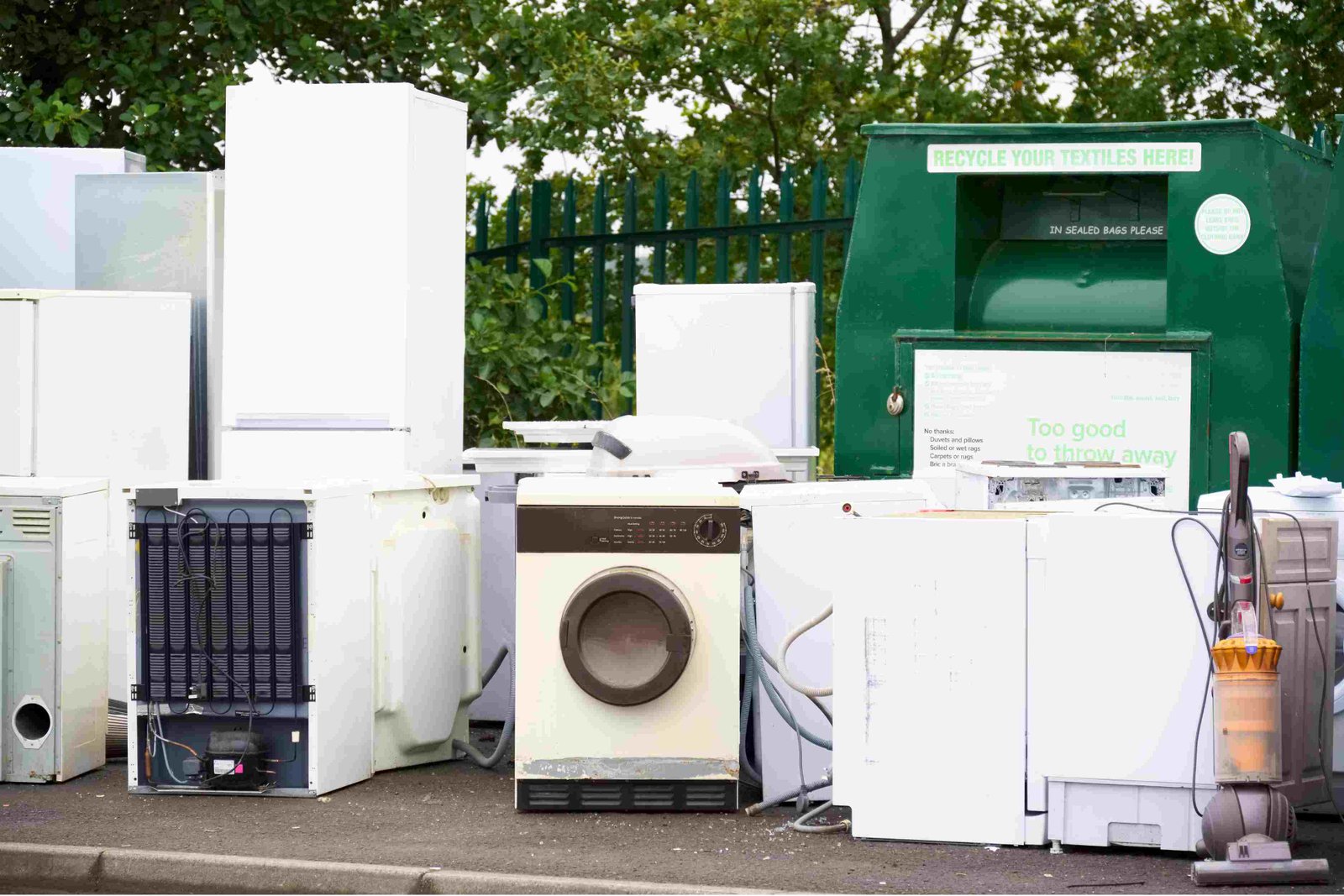How To Get Rid of Old Appliances
Getting rid of old appliances isn’t always straightforward.
Some items are too large for regular trash pickup, while others contain materials that shouldn’t end up in a landfill. Even small electronic appliances like microwaves, coffee makers, or curling irons often have components that require special handling.
Because of the potential harm, appliances need to be handled with care once they’re no longer in use.
The best option is to recycle through a local drop-off site, or a dumpster rental service. For items like refrigerators or air conditioners, make sure refrigerants are removed safely, which some facilities or pickup services can handle for you.
Can You Throw Appliances In The Trash?
Federal law doesn’t outright ban you from throwing away appliances, but the EPA regulates how certain components must be handled. Refrigerators, freezers, and air conditioners must have their refrigerants removed by a certified technician before disposal.
This is part of the EPA’s Clean Air Act regulations, which are designed to prevent the release of ozone-depleting and climate-warming gases.
Can You Take Appliances to the Dump?

In some areas, yes, but not every appliance, and not without a few extra steps.
As we've already covered, some appliances contain materials that require special handling. That means dumps and transfer stations often have restrictions or extra requirements for certain types of items.
Landfills and public drop-off sites typically accept large appliances, like ovens, washing machines, or dishwashers.
On the other hand, it’s a bit more complicated with refrigerators, freezers, air conditioners, and dehumidifiers. Some dumps may accept the item and charge an extra fee to remove the refrigerant on-site, but not all offer this service.
Microwaves are a gray area. They don’t contain refrigerants, but they do contain high-voltage components and electronics, so some landfills treat them as e-waste.
Just make sure to check local guidelines before showing up!
Which Materials Are Recyclable in Appliances and Electronics

Appliances are built to last and are made from durable components like steel, copper, aluminum, plastic, and glass. These materials can be separated, processed, and returned into supply chains for use in new products.
Steel alone makes up about 75% of the average appliance’s weight, and it’s the most recycled material in the United States. In fact, household appliances account for around 10% of all steel recycled nationally each year.
Small electronic appliances and devices also contain valuable non-ferrous metals like copper, gold, and silver, especially in circuit boards, wiring, and connectors. Some even include rechargeable batteries made of lithium or nickel, which must be handled separately due to safety risks during transport or processing.
Because of this, recycling is always the best option. It applies not just to appliances (pun intended), but to other things we throw away at home, as well. It keeps useful materials in circulation, reduces the need for raw resource extraction, and makes more sense than sending everything to a landfill.
Hazardous Components Found in Common Appliances
Refrigerators, freezers, and air conditioners use HFCs (hydrofluorocarbons) or, increasingly, HFOs (hydrofluoroolefins) as refrigerants. While these are less damaging to the ozone layer than older CFCs, they are still potent greenhouse gases.
Refrigerant is stored in sealed, pressurized coils, which can release the gas into the air if punctured. Most models also contain foam insulation, which may release gases when broken apart.
Washing machines and dishwashers’ internal plastics are often treated with flame retardants, which can release toxic compounds if incinerated or improperly processed.
Microwaves contain high-voltage capacitors that can retain a dangerous charge even when disconnected from power. The internal circuit boards often contain lead solder and heavy metals, and the magnetron inside includes beryllium oxide, a material that can be hazardous if crushed or cracked.
Plastic housing and wiring in most newer appliances is made of plastics that include flame retardants to meet safety regulations. These chemicals aren’t a risk during normal use, but can release toxic fumes or dust when the appliance is dismantled or burned.
5 Responsible Appliances Disposal Methods

#1. Hire a Dumpster Rental Service
Sourgum provides flexible dumpster rentals for appliance disposal, with sizes suited for everything from home cleanouts to large commercial projects. We have roll-off dumpsters ranging from 10 to 40 yards to match the scope of your job.
Once you book your container, we deliver it straight to your site. You load at your pace, then schedule a pickup when you're ready. From there, we handle the rest.
We work with certified recycling centers that specialize in recovering metals, plastics, and hazardous components from appliances, keeping reusable materials in circulation and harmful ones out of landfills.
If you're looking for a used appliances disposal service you can trust to handle the job properly, we're ready to help! Contact us today!
#2. Donate Appliances To Charity
If your appliances are clean and in working condition, why not donate them?
National charities like Salvation Army and Goodwill often accept working appliances and may even provide a pick-up service. Habitat for Humanity is another national organization that accepts appliance donations.
You can also reach out to local shelters, thrift stores, charities, or even schools to see if they are in need of the items you’re looking to discard.
#3. Sell or Give Away
You can place a listing on online marketplaces such as Craigslist, Facebook Marketplace, or other local sites. You can choose whether you'd like to sell the device for a reduced amount or if you would like to give it away for free.
If you are allowed to do so by your local municipality, you can also try placing the appliance on the sidewalk with a free sign. Only do this if you know your appliance is in working condition, or else you might make someone lug home an unrepairable device.
#4. Recycle Appliances at Local Facilities
If your city provides appliance recycling services, there should be local stations where you can drop off your items.
These centers are typically located at transfer stations or dumps. Earth911.com has a searchable database with over 100,000 listings that can help you locate appliance recycling centers near you.
#5. Check for EPA RAD Appliance Disposal Programs
The EPA created the Responsible Appliance Disposal (RAD) program to minimize the environmental impact of discarded appliances. If there’s a RAD partner in your area, they may accept your appliance for free.

Receive product updates, news, and helpful articles.